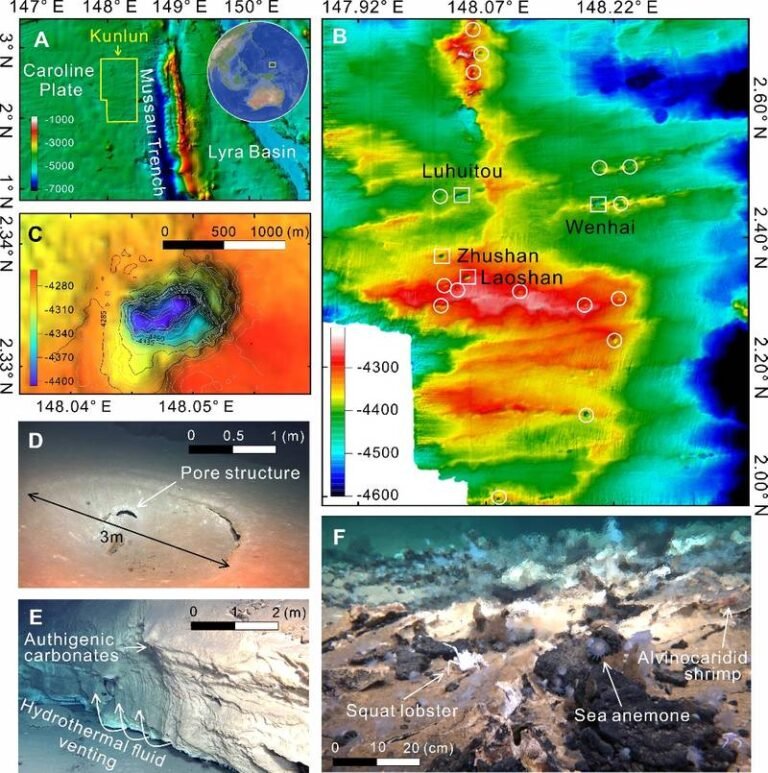The Unveiling of the Kunlun Hydrothermal Field: A Window into Earth’s Depths
A groundbreaking discovery by a research team led by Prof. Sun Weidong from the Institute of Oceanology of the Chinese Academy of Sciences (IOCAS) has revealed a massive hydrogen-rich hydrothermal system beneath the western Pacific seafloor. This system, named the Kunlun hydrothermal field, provides a unique glimpse into Earth’s internal processes and the conditions that may have fostered the origin of life.
Located approximately 80 kilometers west of the Mussau Trench, in a tectonically active region of the Caroline Plate, the Kunlun hydrothermal field consists of 20 large seafloor depressions arranged in a clustered pattern resembling a pipe swarm. These structures, some over a kilometer in diameter, were explored using the crewed submersible Fendouzhe, revealing abundant hydrogen-rich fluids and extensive carbonate formations below the carbonate compensation depth.
Prof. Sun noted, “The Kunlun system stands out not only for its exceptionally high hydrogen flux but also for its scale and geological setting. It challenges previous assumptions by demonstrating that serpentinization-driven hydrogen generation can occur far from mid-ocean ridges.”
The researchers utilized advanced Raman spectroscopy on the seafloor to detect molecular hydrogen concentrations of 5.9–6.8 mmol/kg in diffuse hydrothermal fluids. Despite moderate temperatures below 40°C, geochemical indicators suggest significantly higher subsurface temperatures conducive to dolomite formation, indicating robust fluid-rock interactions deep beneath the ocean floor.
The estimated annual hydrogen flux from the Kunlun field is approximately 4.8 × 10¹¹ mol/year, representing a significant portion of the global abiotic hydrogen flux from submarine sources. Geological features such as steep-walled craters, explosive breccia deposits, and layered carbonate structures suggest a staged evolutionary model of hydrothermal activity.
Prof. Sun highlighted the ecological potential of the Kunlun field, pointing out the diverse deep-sea life thriving in this environment, including shrimp, squat lobsters, anemones, and tubeworms that may rely on hydrogen-driven chemosynthesis. This discovery offers a natural laboratory for studying the link between hydrogen emissions and the emergence of primitive life, as the alkaline, hydrogen-rich fluids at Kunlun mimic early Earth’s chemical environment.
The findings of this research were recently published in Science Advances on Aug. 8, shedding light on the significance of the Kunlun hydrothermal field as a window into Earth’s depths and a potential hotspot for understanding the origins of life.

